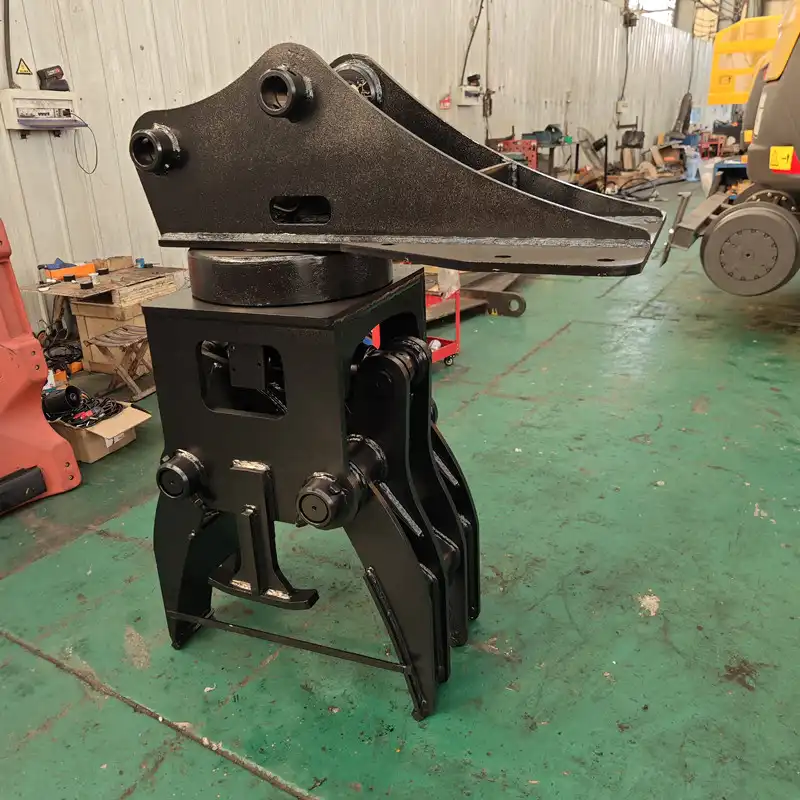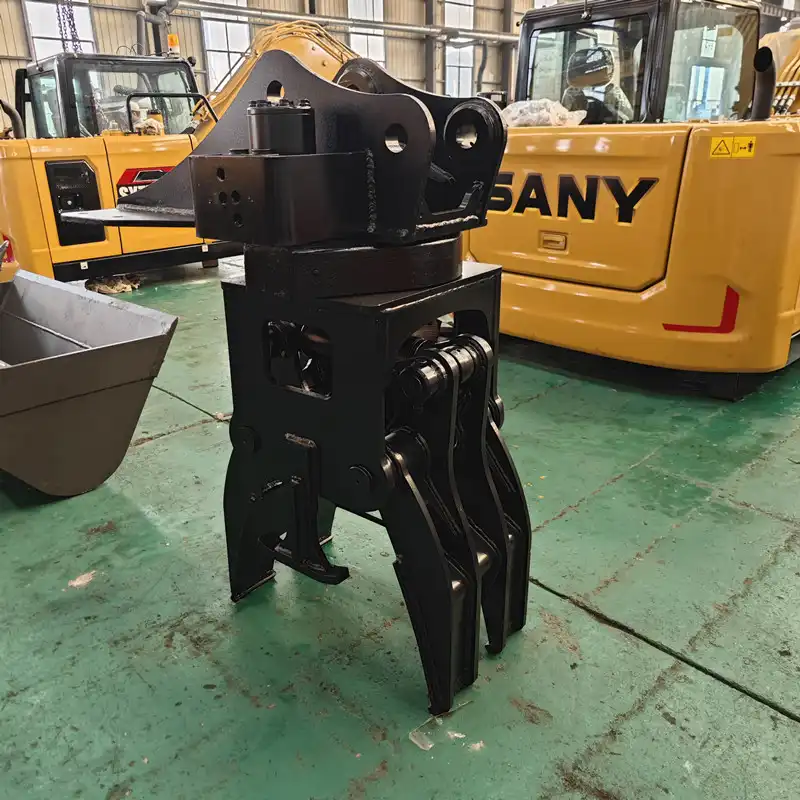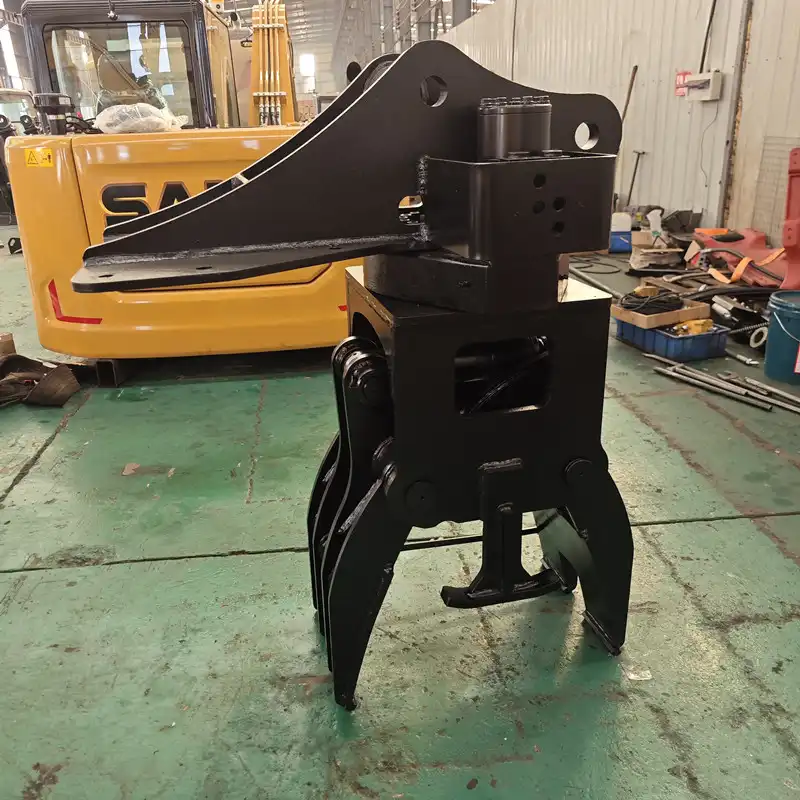New VS Used Railway Sleeper Changer
When it comes to railway maintenance, the choice between a new or used railway sleeper changer can significantly impact your operations. These specialized machines are crucial for efficiently replacing worn-out or damaged sleepers, ensuring track stability and safety. New changing railroad ties machine offers cutting-edge technology and pristine performance, while used models provide cost-effectiveness with proven reliability. This comprehensive guide explores the pros and cons of each option, helping you make an informed decision that aligns with your project needs and budget constraints.

Comparative Analysis: Performance and Reliability
Efficiency: New vs Used Railway Sleeper Changers
New railway sleeper changers boast state-of-the-art technology, resulting in superior efficiency. These machines often feature advanced hydraulic systems and automated processes that streamline sleeper replacement. For instance, modern sleeper changers can extract and insert multiple sleepers simultaneously, significantly reducing operation time. They also come equipped with precise positioning systems, minimizing errors and rework.
On the other hand, used railway sleeper changers, while potentially less advanced, can still offer commendable efficiency. Many older models have proven track records of reliable performance. However, their efficiency may be somewhat lower due to older technology and wear from previous use. It's worth noting that well-maintained used machines can still compete with newer models in terms of output, especially when operated by experienced crews.
Reliability: Assessing Downtime Risks
Reliability is a critical factor in railway maintenance operations. New sleeper changers typically come with manufacturer warranties, reducing the risk of unexpected downtime due to equipment failure. They're less likely to experience mechanical issues, ensuring consistent performance during critical maintenance windows.
Used changing railroad ties machine, while potentially more prone to breakdowns, can still be highly reliable if properly maintained. The key lies in thorough inspection and assessment before purchase. Many used machines have proven their durability over years of service. However, buyers should be prepared for potentially higher maintenance requirements and the possibility of more frequent repairs.
Technology Integration in Modern Sleeper Changers
New railway sleeper changers often incorporate cutting-edge technology that enhances both efficiency and safety. Features like GPS tracking, real-time performance monitoring, and integrated diagnostic systems are becoming standard. These technologies allow for predictive maintenance, reducing unexpected downtime and optimizing machine performance.
While used sleeper changers may lack some of these advanced features, many can be retrofitted with modern technology. This approach allows buyers to benefit from some technological advancements without the full cost of a new machine. However, the compatibility and cost of such upgrades should be carefully considered.
Long-Term Cost Implications of New vs Used
Initial Investment vs Operational Expenses
The initial cost difference between new and used railway sleeper changers is often substantial. New machines represent a significant capital investment but come with the latest features and full warranty coverage. This higher upfront cost is offset by lower initial maintenance needs and potentially higher productivity.
Used sleeper changers offer a more budget-friendly entry point, making them attractive for smaller operations or companies with tighter capital constraints. However, it's crucial to look beyond the purchase price. Operational expenses, including fuel efficiency, maintenance costs, and potential downtime, play a significant role in the total cost of ownership.
Maintenance Costs: New and Used Sleeper Changers
Maintenance costs vary significantly between new and used changing railroad tie machines. New machines typically require less frequent servicing in their early years, with most issues covered under warranty. This can lead to lower short-term maintenance expenses and more predictable budgeting.
Used sleeper changers may require more frequent and potentially more expensive maintenance. Parts might be harder to source for older models, potentially increasing both cost and downtime. However, with proper care and preventive maintenance, many used machines can operate reliably for years, making them a cost-effective choice for some operators.
ROI Analysis: New vs Used Railway Equipment
Calculating the return on investment (ROI) for railway sleeper changers involves considering factors beyond just the purchase price. New machines often offer higher productivity and efficiency, potentially allowing for more work to be completed in less time. This increased output can lead to faster ROI, especially for high-volume operations.
Used sleeper changers, while less expensive upfront, may have a different ROI trajectory. Lower initial costs can mean quicker payback periods, but this advantage might be offset by lower efficiency or higher maintenance costs. The ROI calculation should also factor in the expected useful life of the machine and any major repairs or upgrades that might be necessary.

Making an Informed Decision: Key Considerations
Assessing Your Railway Maintenance Needs
Before deciding between a new or used railway sleeper changer, it's crucial to assess your specific maintenance needs. Consider factors such as the scale of your operations, frequency of use, and the types of tracks you maintain. Large-scale operations with frequent maintenance schedules might benefit more from the latest technology and efficiency of new machines. Smaller operations or those with less frequent use might find used equipment more cost-effective.
Also, consider your workforce's expertise. Newer machines might require additional training, while experienced teams might be more comfortable with familiar, older models. The compatibility with your existing equipment and maintenance facilities is another important factor to consider.
Warranty and After-Sales Support Comparison
New railway sleeper changers typically come with comprehensive warranties, offering peace of mind and protection against unexpected repair costs. Manufacturers often provide extensive after-sales support, including training, maintenance programs, and readily available spare parts. This level of support can be crucial for minimizing downtime and ensuring optimal performance.
Used equipment may have limited or no warranty coverage, depending on the seller and the age of the machine. However, some dealers of used equipment offer short-term warranties or service agreements. When considering used sleeper changers, investigate the availability of parts and technical support for the specific model you're interested in. The lack of proper support can lead to extended downtimes and increased operational costs.
Environmental Impact: New vs Used Sleeper Changers
Environmental considerations are increasingly important in railway maintenance. New sleeper changers often boast improved fuel efficiency and reduced emissions, aligning with modern environmental standards. Many new models incorporate eco-friendly features like start-stop technology and advanced exhaust systems, contributing to a smaller carbon footprint.
Used sleeper changers, while potentially less environmentally friendly in terms of emissions, offer a different kind of ecological benefit. By extending the life of existing machinery, choosing a used model can reduce the environmental impact associated with manufacturing new equipment. However, older machines may consume more fuel and produce higher emissions. Some used models can be retrofitted with newer, cleaner engines or emission control systems, bridging the gap between environmental responsibility and cost-effectiveness.

FAQ
①What is the average lifespan of a railway sleeper changer?
The lifespan of a railway sleeper changer can vary significantly depending on usage and maintenance. Generally, well-maintained machines can last 15-20 years or more.
②How much more efficient are new sleeper changers compared to older models?
New sleeper changers can be up to 30-40% more efficient than older models, mainly due to advanced technologies and improved design. However, this can vary based on specific models and operational conditions.
③Can used railway sleeper changers be upgraded with new technology?
Yes, many used sleeper changers can be retrofitted with newer technologies like GPS tracking or more efficient hydraulic systems. The feasibility and cost-effectiveness of upgrades depend on the specific model and desired features.
④What are the key maintenance differences between new and used sleeper changers?
New sleeper changers typically require less frequent maintenance initially and are covered by warranties. Used machines may need more regular servicing and might face challenges with parts availability for older models.
⑤How do environmental regulations affect the choice between new and used sleeper changers?
Newer models are designed to meet current environmental standards, offering better fuel efficiency and lower emissions. Older machines might require upgrades to comply with current regulations, which should be factored into the decision-making process.
Choosing between a new and used railway sleeper changer involves carefully weighing various factors. New machines offer cutting-edge technology, higher efficiency, and better environmental performance, but at a higher initial cost. Used sleeper changers provide a more budget-friendly option with proven reliability, though they may require more maintenance and lack some modern features. The right choice depends on your specific operational needs, budget constraints, and long-term maintenance strategy. By thoroughly assessing these factors and considering the insights provided in this guide, you can make an informed decision that optimizes your railway maintenance operations and ensures the safety and efficiency of your tracks.
For high-quality railway sleeper changers and a wide range of railway maintenance equipment, Tiannuo Machinery is your trusted partner. We offer sleeper changers to suit various operational needs and budgets. Our product range extends beyond sleeper changers to include screening machines, tamping machines, and various excavator modifications and accessories. Whether you're looking for a state-of-the-art changing railroad ties machine or specialized engineering arms and buckets, we have the solutions to meet your railway maintenance and construction needs. For expert advice and detailed product information, contact us at raymiao@stnd-machinery.com. Our team is ready to assist you in finding the perfect equipment for your projects.
References
- Railway Technology Magazine, "Advancements in Railway Sleeper Replacement Technology", 2023 Edition
- International Railway Journal, "Comparative Study: New vs Used Maintenance Equipment in Rail Operations", Vol. 45, Issue 3
- TianNuo Machinery Official Website, "Railway Maintenance Equipment Specifications and Performance Data", 2023
- Railway Track and Structures, "Long-term Cost Analysis of Track Maintenance Equipment", September 2023 Issue
- Global Railway Review, "Environmental Considerations in Railway Maintenance Machinery", Q2 2023 Report
- International Union of Railways (UIC), "Best Practices in Railway Infrastructure Maintenance", 2023 Guidelines
About Author: Arm
Arm is a leading expert in the field of specialized construction and railway maintenance equipment, working at Tiannuo Company.

